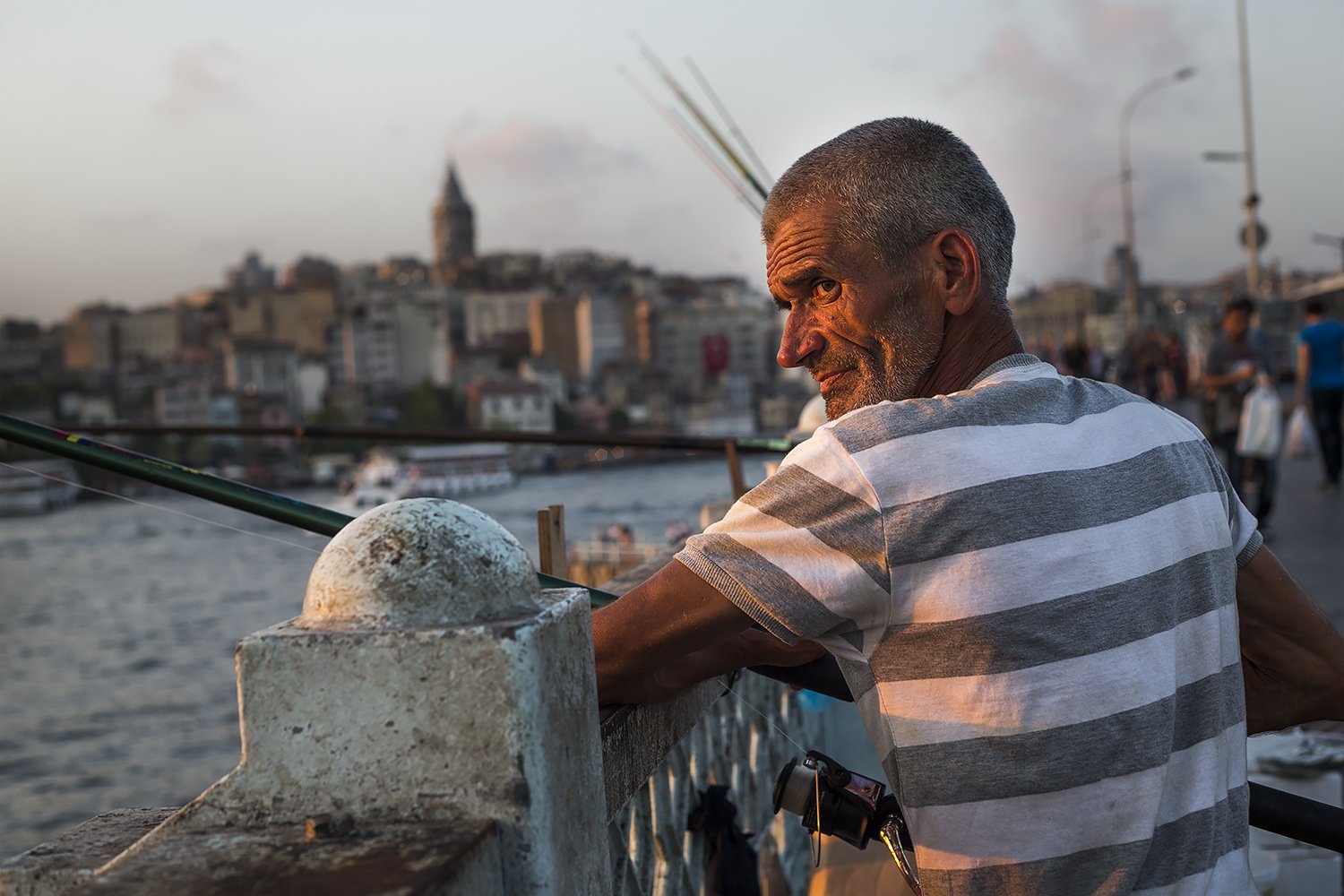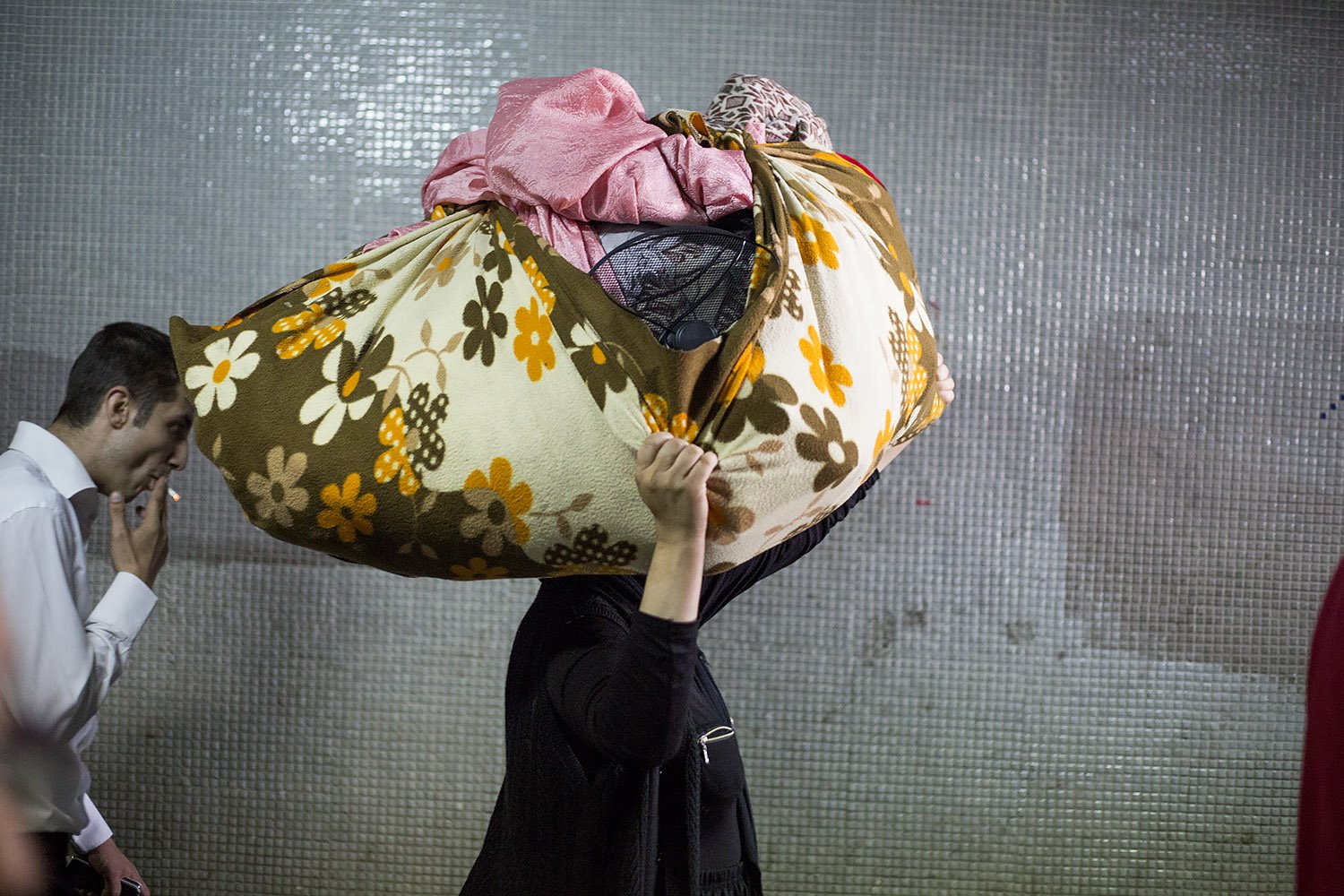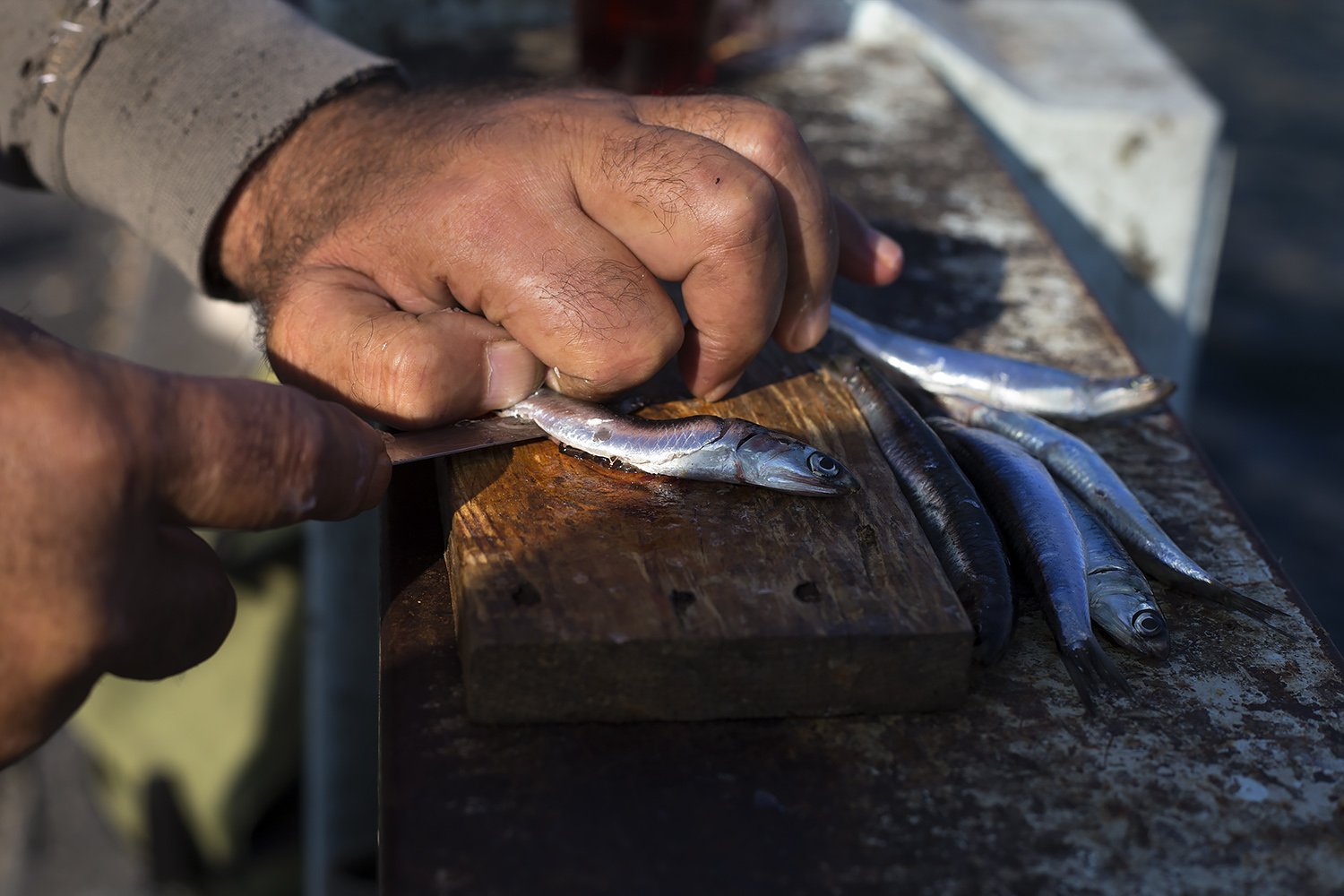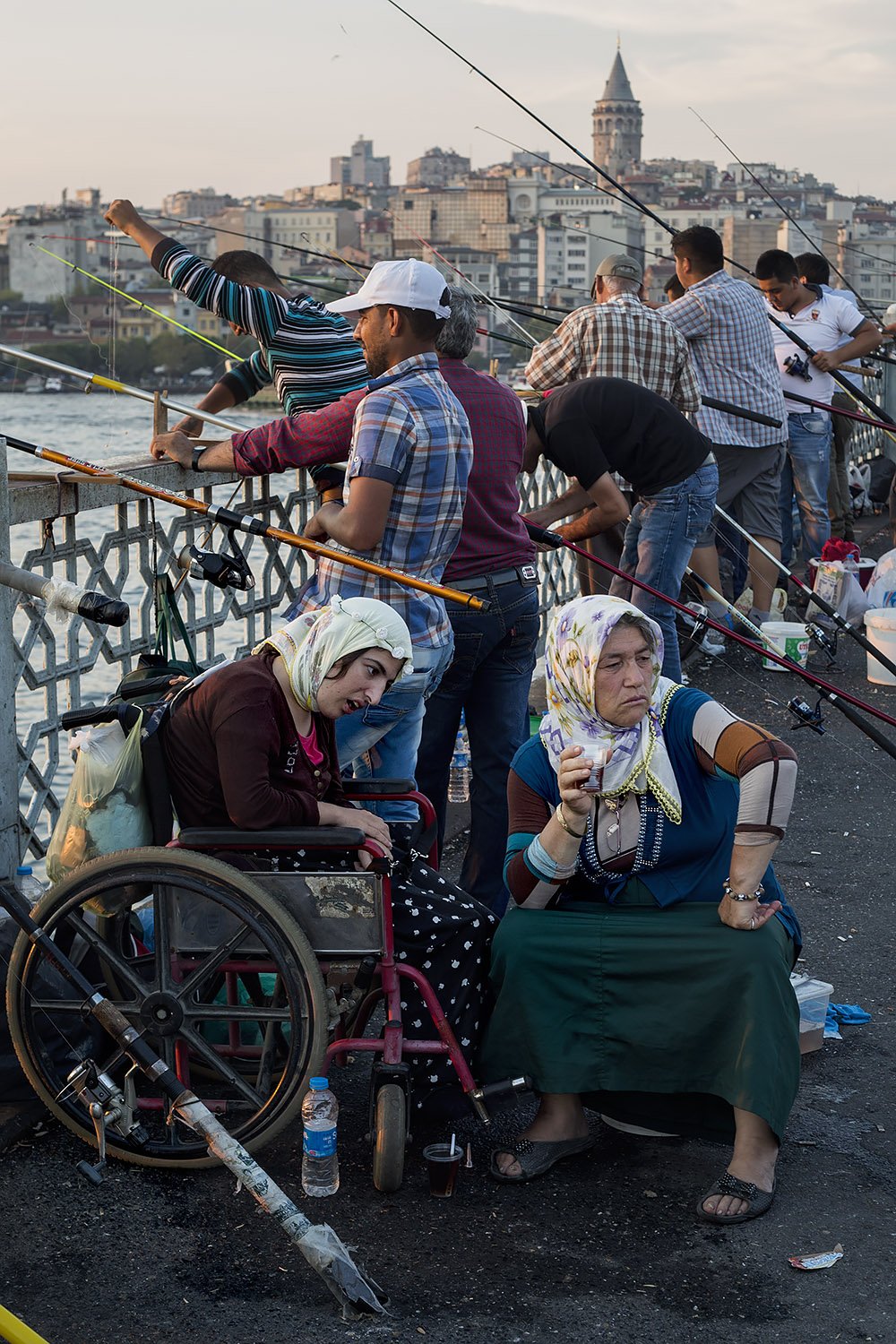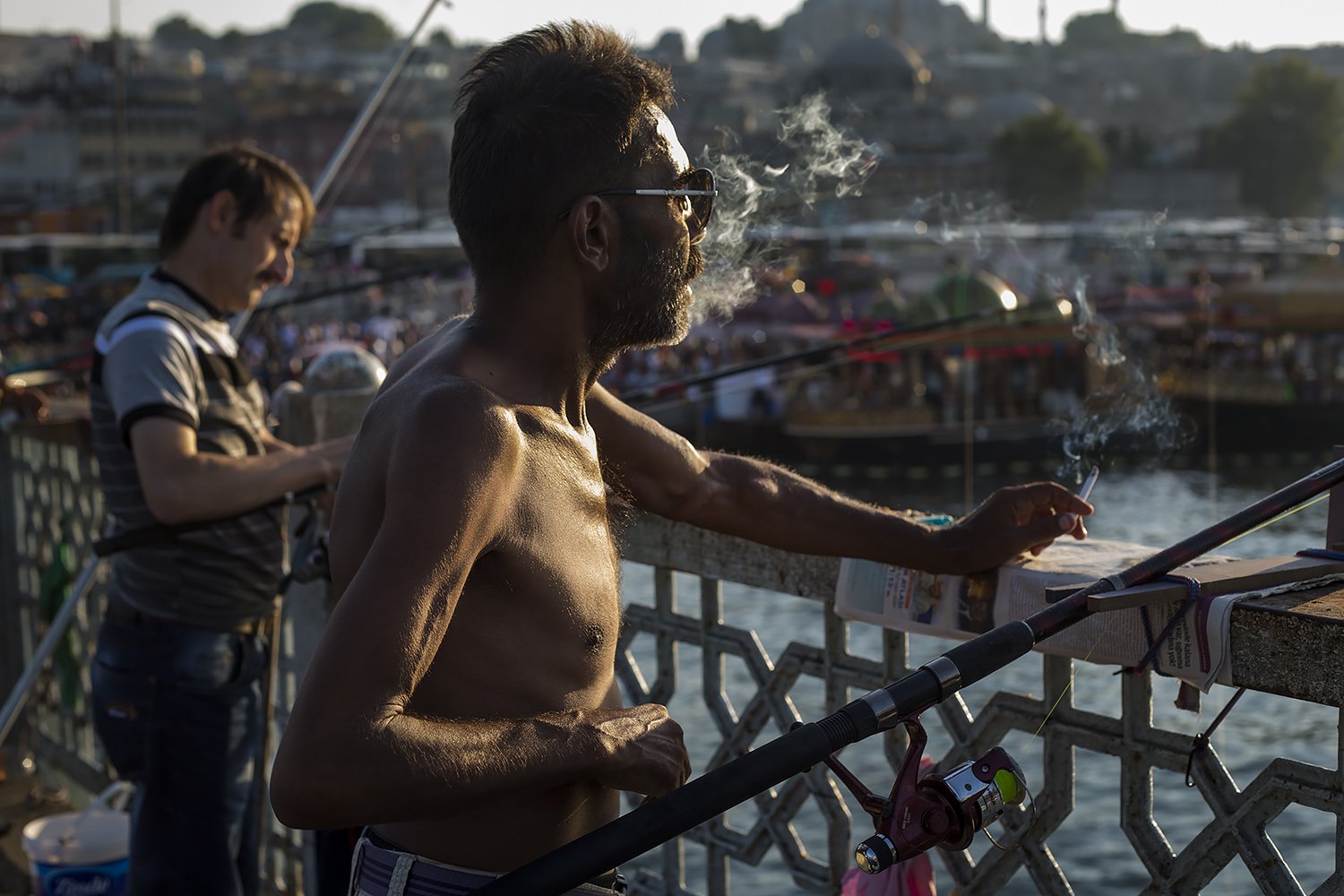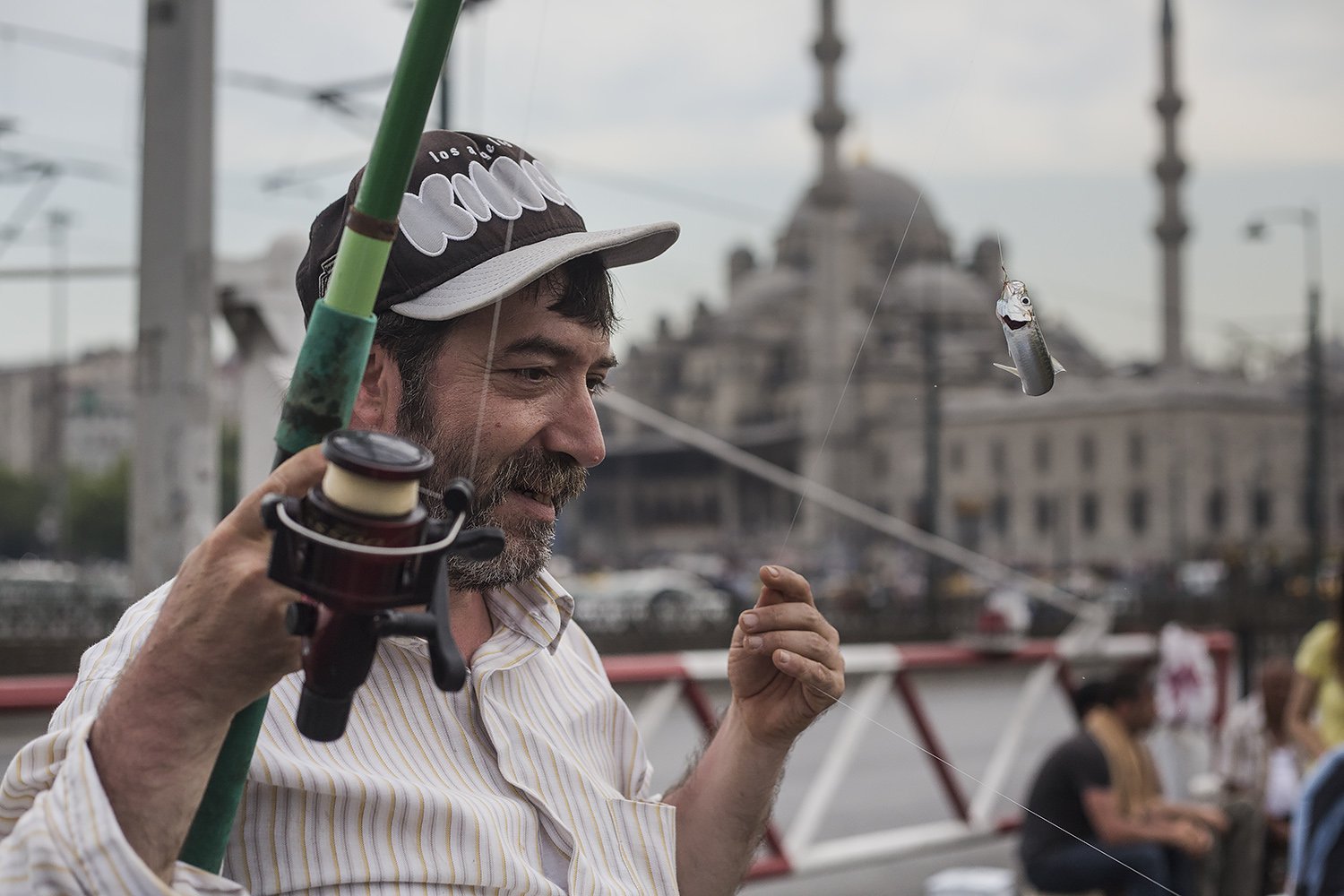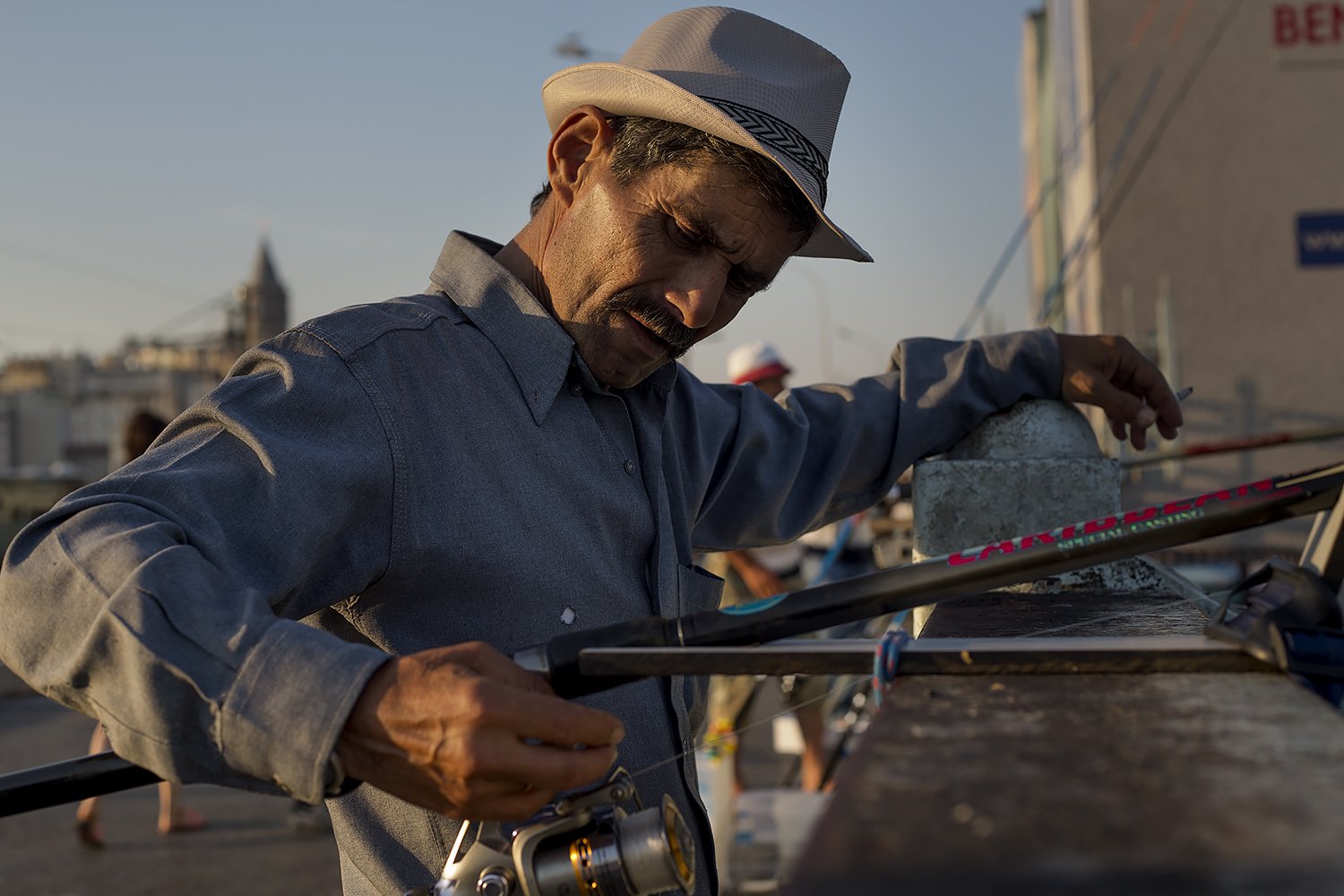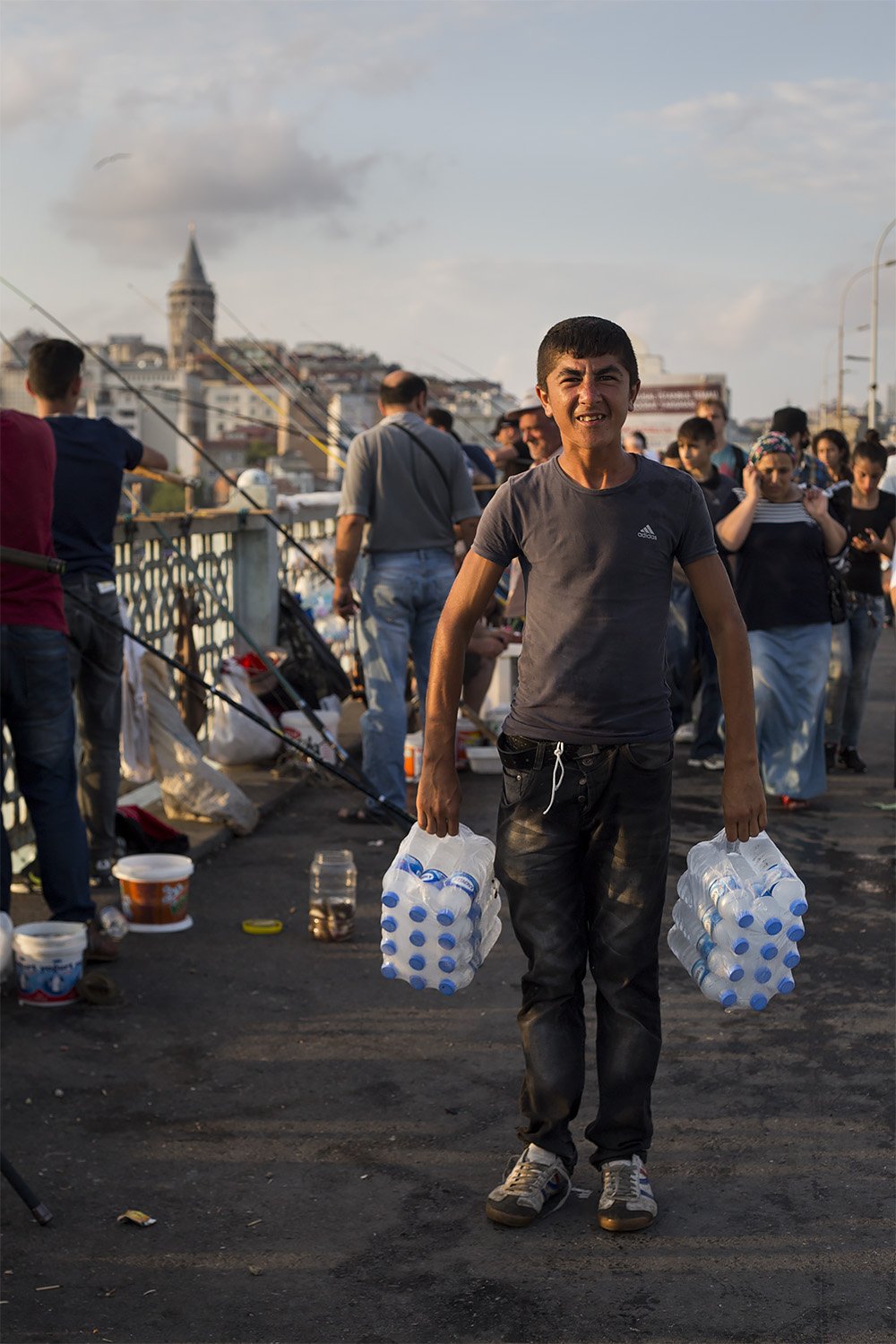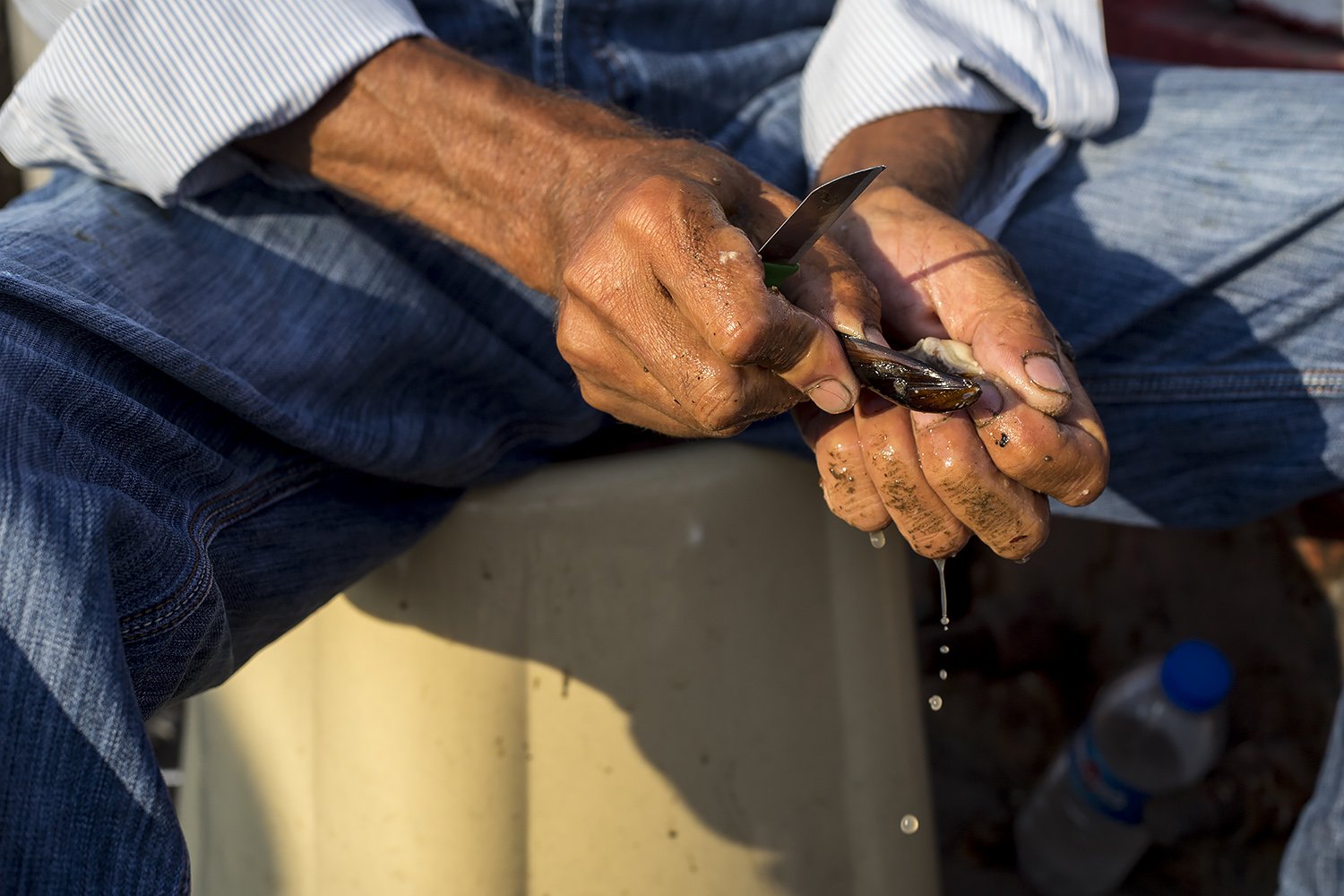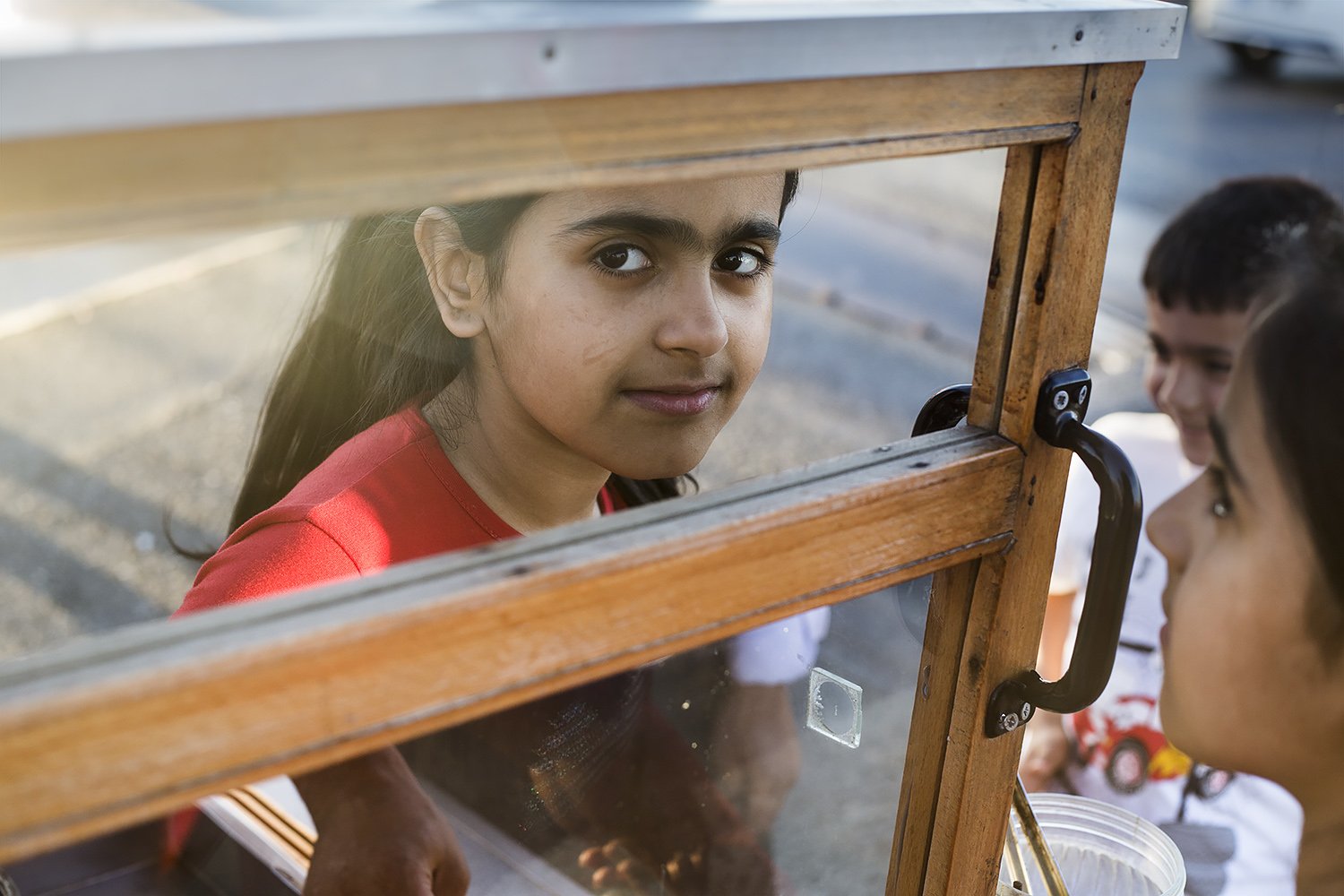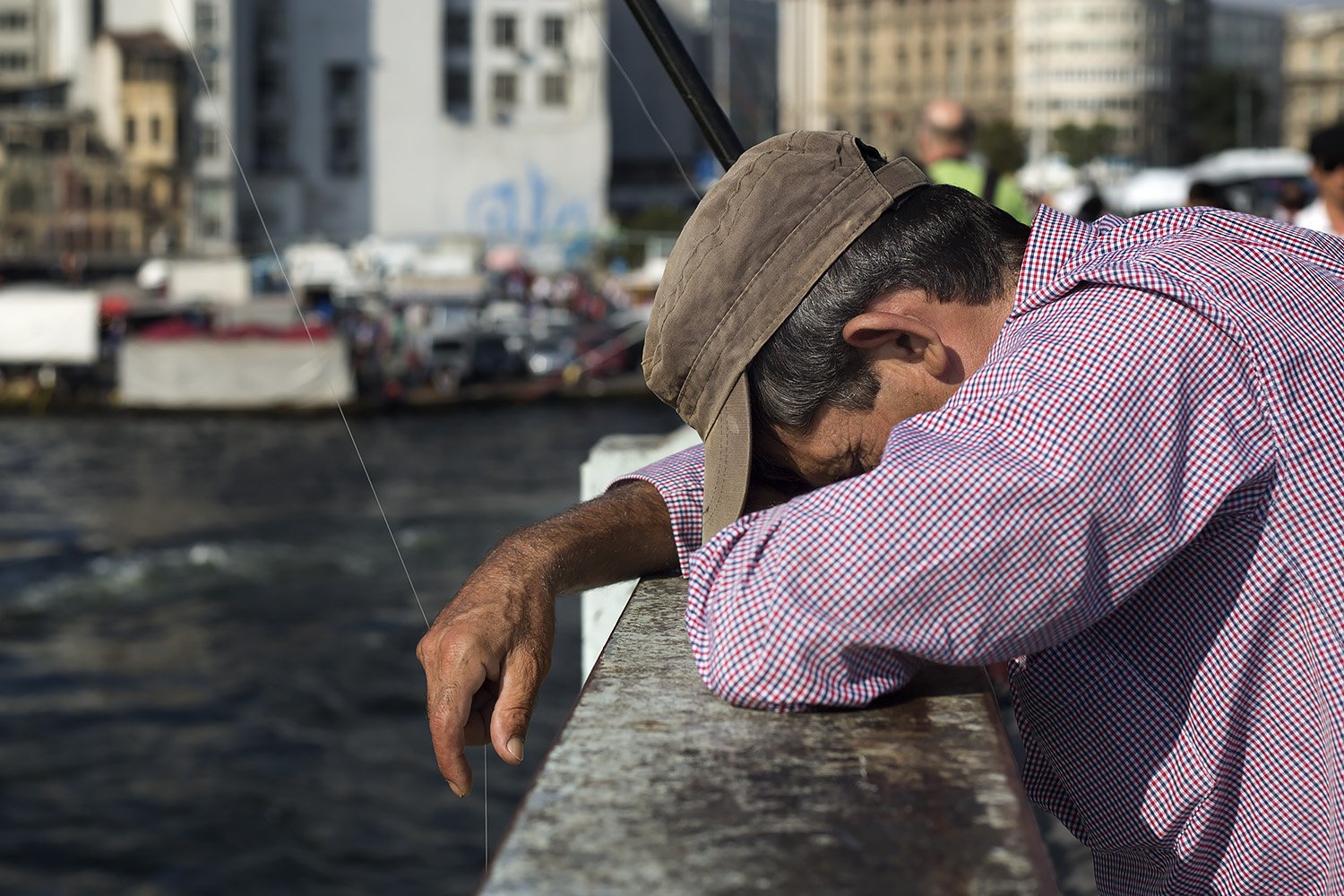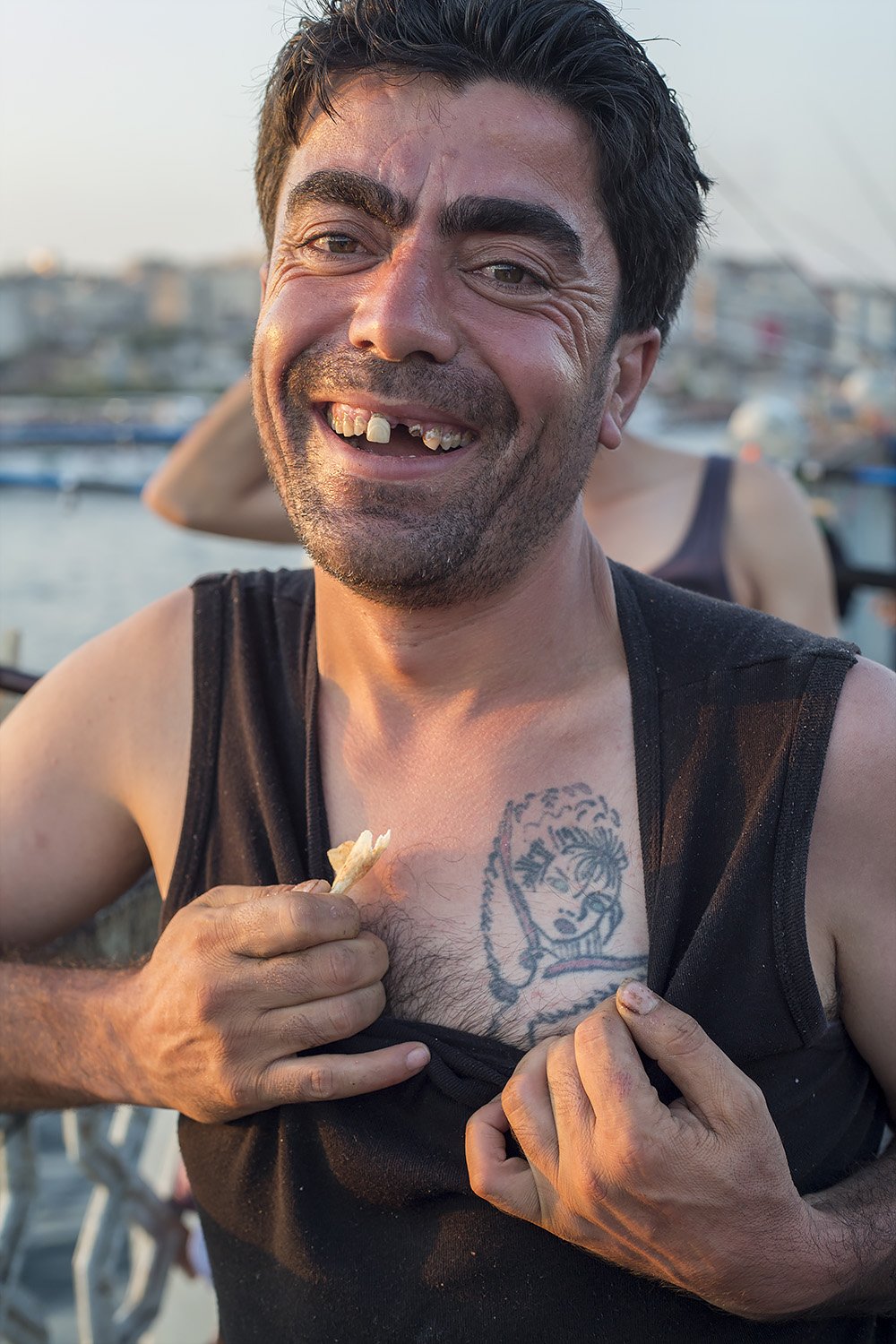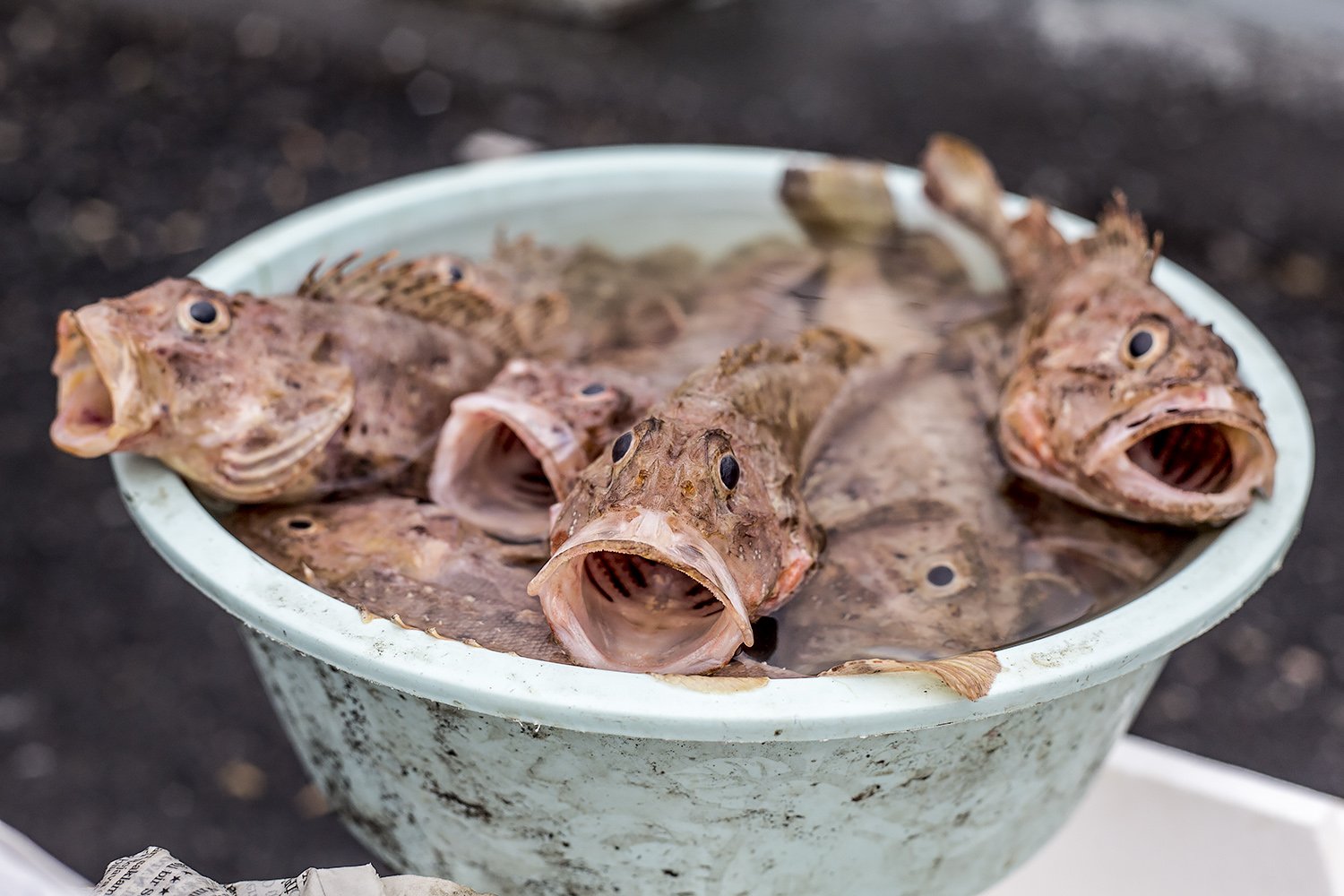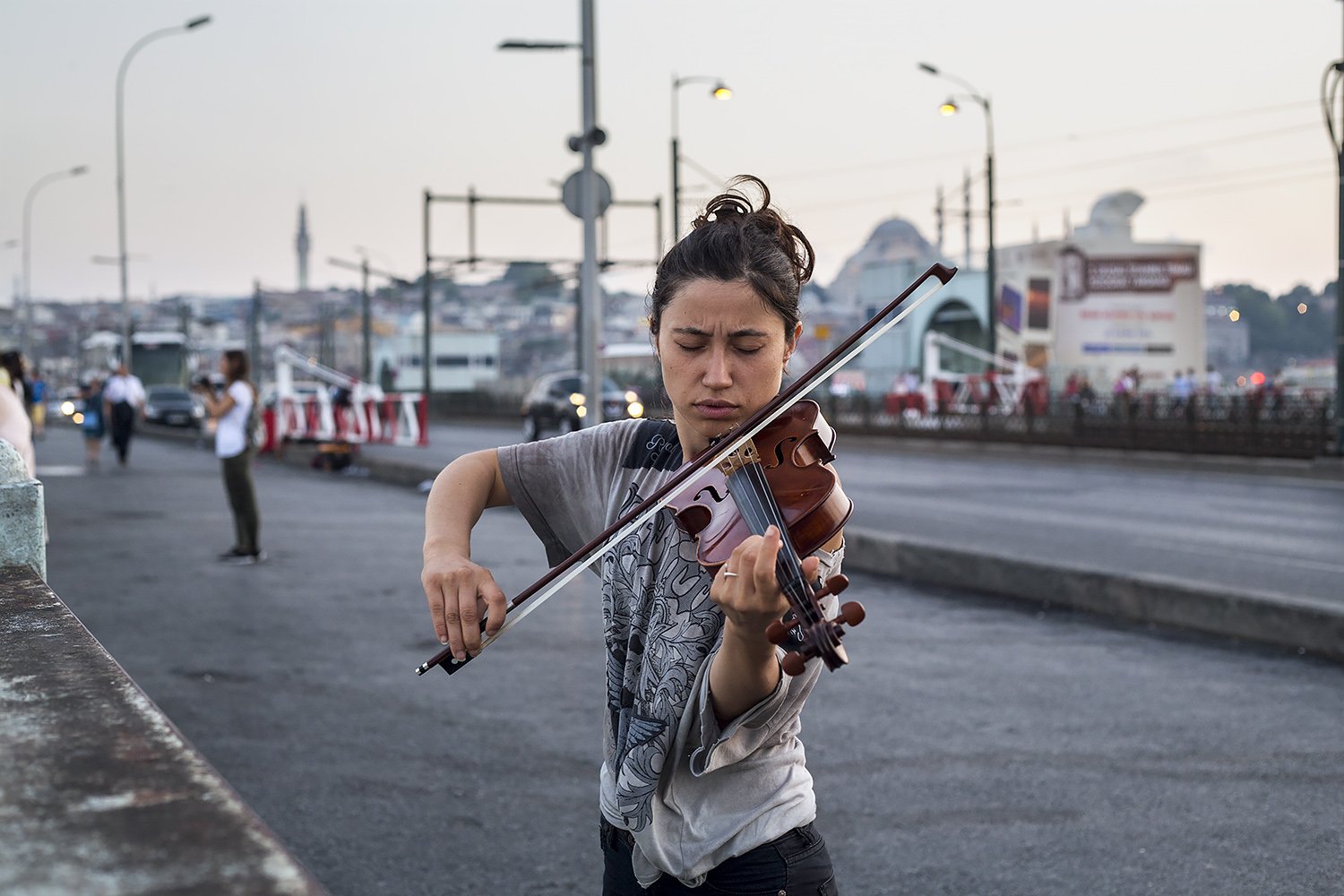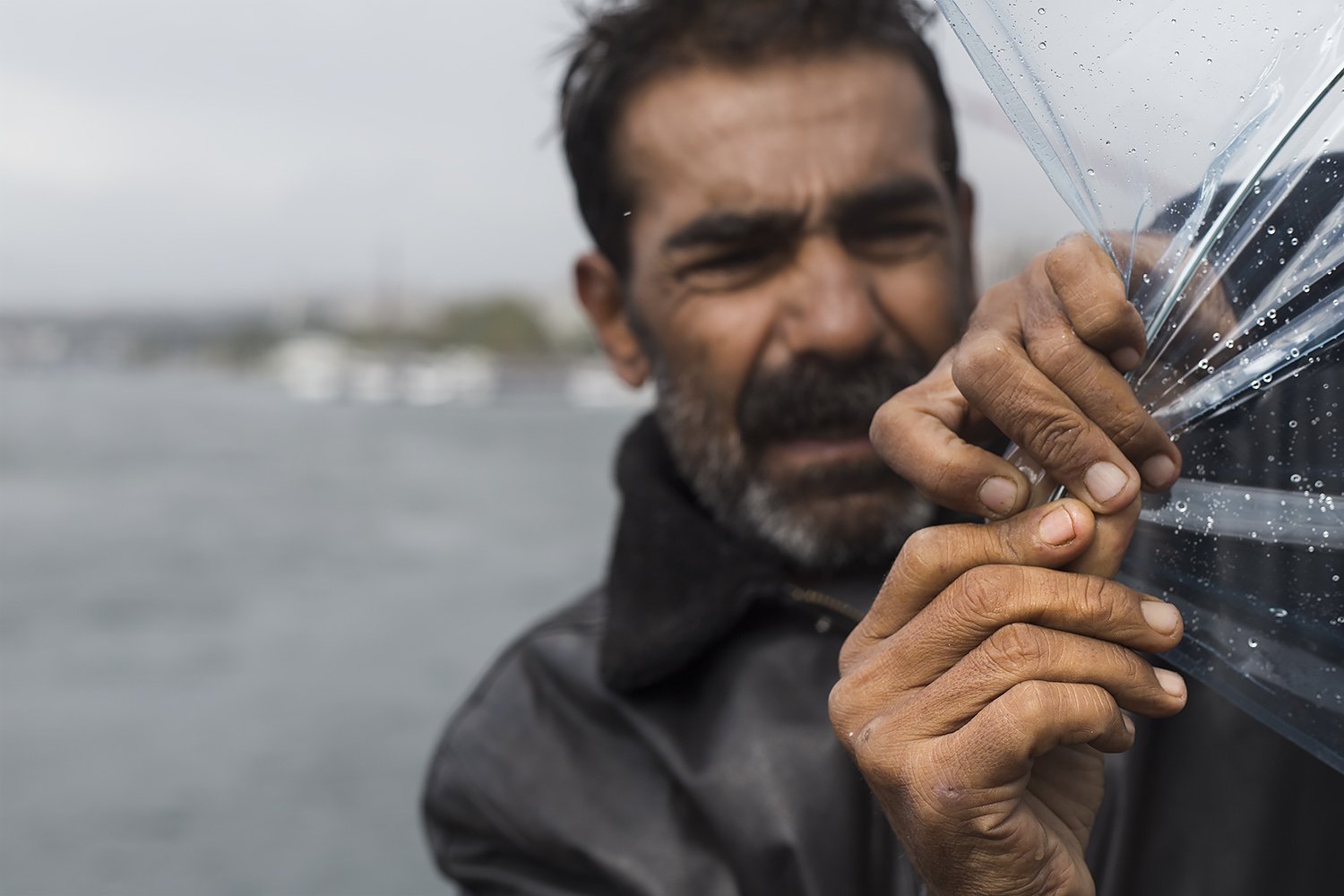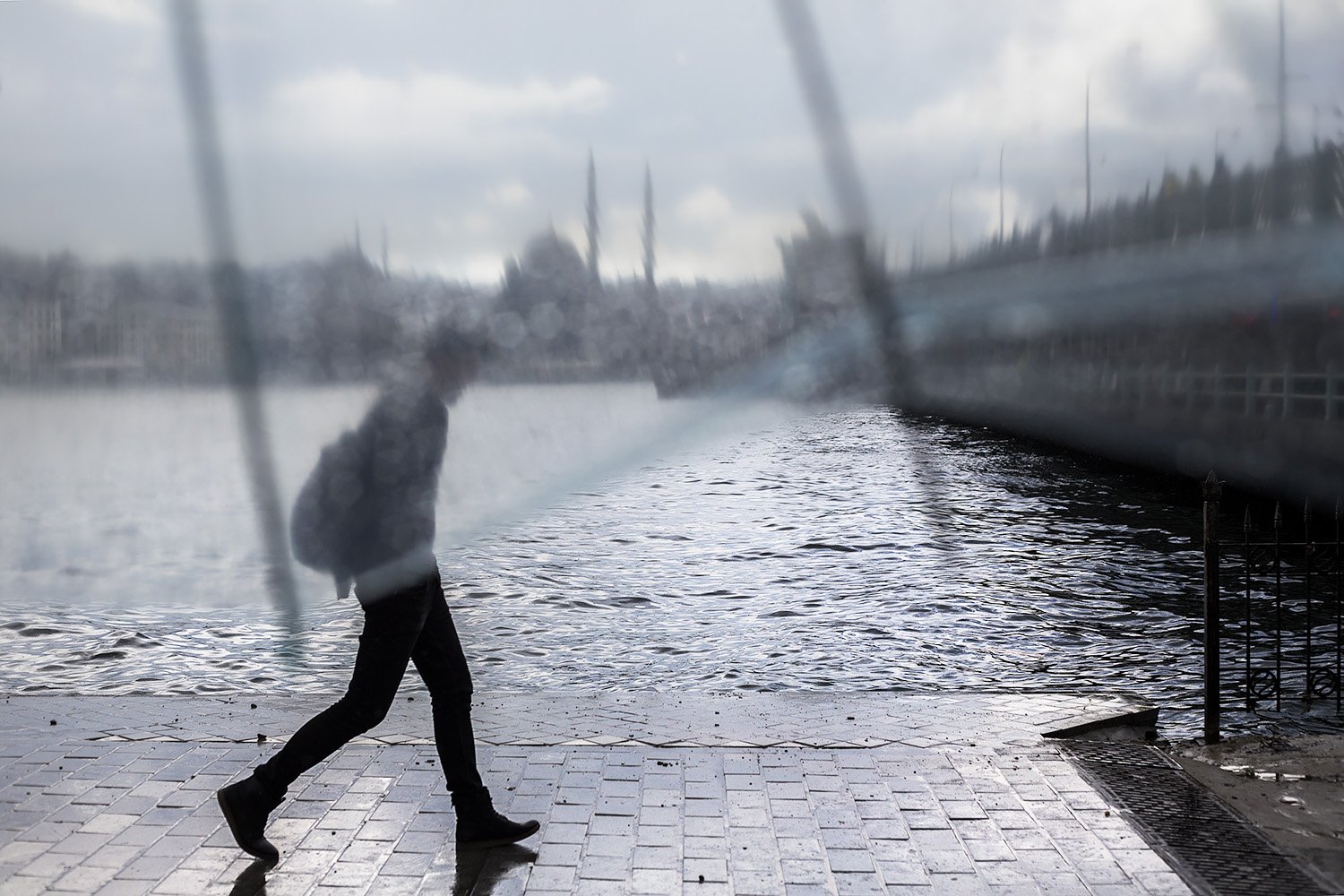A Year on Galata bridge
Istanbul’s Galata bridge; Turkeys universe reduced to a single spot of a little less than 500 meters long and a little over 40 meters wide. On the bridge it all comes together, for a moment, then parts, before coming together yet again. Like a living organism breathing in and out, with flocks of people making their way from Eminönü to Karaköy and Galata or the other way round. With numerous boats passing underneath, up to the Golden Horn or down to the Bosporus. Together with the small underground passageways connecting the bridge with tram stops and ferry docks, the bridge is a Turkish microcosm, telling the story of Turkey’s history as well as showing us glimpses of its future.
Standing on the bridge we need merely look around us to see the Gülhane gardens of the Topkapi palace – home of generations of sultans bathing in the sunlight on a warm June afternoon , to catch a glimpse of the centuries old Egyptian Bazaar – the city’s center of spice trade -, or to distinguish the silhouettes of the Yeni Camii and Süleymaniye Camii’s minarets against the darkening sky, as calls for prayers fill the air at dusk, silencing the otherwise omnipresent hooting of cars and shouts of street vendors.
A lovely sight for the tourists, and those who are able to appreciate Eminönü’s Ottoman skyline while commuting to and from work by ferry, but for some it also symbolises the direction in which Turkey has been heading over the past decade. “Look around you” the retired mathematics teacher says, pointing at the minarets visible every few hundred meters apart. “Do you see any schools, any universities? We are building new mosques everywhere and all the time whereas we should be investing in education, in our future.” Through the smell of the sea and of wet asphalt the distinct odor of raki becomes apparent as the older man starts speaking more vehemently. “If we would have built schools, there wouldn’t be Arabs walking the streets but European cultured, educated people. Instead we are becoming like Saudi-Arabia.”
I know that in between the minarets pointed out by the teacher stands another towering structure – easily confounded with a minaret – which is actually a fire-watchtower located on the grounds of Istanbul university, and that most universities in Istanbul are not located in the historic district, but the teacher does point out a worry shared by many; the increased focus on religion in day to day life as well as the rising Arabic influences on Turkish culture. The influx of millions of Syrian refugees, of which hundreds of thousands have found refuge in Istanbul’s poorer neighborhoods certainly doesn’t help to alleviate their concerns. The Syrians also found their way to the Galata bridge, begging for money or joining in the pleasure of fishing – sometimes a bit clumsily. “He clearly doesn’t know what he’s doing.’ jokes a Turkish fisherman pointing at the Syrian man losing his bait without catching any fish.
Tourists crossing the bridge may often think they have walked their way from Europe into Asia. Although the means of transportation to the Asian side are increasing, walking there is still not one of them, unless the metro under the Bosporus breaks down and one has to continue by foot. The tourist’s mistake is nevertheless easy to understand. Although the Golden Horn does not divide Istanbul into two continents, crossing the bridge does literally take you from one world into a completely different one. From the very traditional, religious and tourist-like Eminönü to the more modern, vibrant Karaköy and Galata neighborhoods. In that sense, the crossing between Europe and Asia is even better felt on the Galata bridge than it would be when actually traversing the Bosporus into Asia.
The bridge is the place in Istanbul where both cultures constantly meet and part ways. You may find women wearing a headscarf handling their fishing gear with ease, business men traversing the Golden Horn at a high pace, tourists strolling the sidewalks thrilled by the many fishermen, Syrian refugees, gipsy beggars, Kurdish street vendors, Turkish people from all corners of the country, nationalists, secularists, imperialists, African vendors dealing in watches mainly, mobile sandwich shops, tea vendors, plastic card repairmen, and the occasional police officer who’s arrival will result in a temporary suspension of all business undertaken.
The bridge is the place in Istanbul where both cultures constantly meet and part ways. You may find women wearing a headscarf handling their fishing gear with ease, business men traversing the Golden Horn at a high pace, tourists strolling the sidewalks thrilled by the many fishermen, Syrian refugees, gipsy beggars, Kurdish street vendors, Turkish people from all corners of the country, nationalists, secularists, imperialists, African vendors dealing in watches mainly, mobile sandwich shops, tea vendors, plastic card repairmen, and the occasional police officer who’s arrival will result in a temporary suspension of all business undertaken.
The bridge is the place in Istanbul where both cultures constantly meet and part ways. You may find women wearing a headscarf handling their fishing gear with ease, business men traversing the Golden Horn at a high pace, tourists strolling the sidewalks thrilled by the many fishermen, Syrian refugees, gipsy beggars, Kurdish street vendors, Turkish people from all corners of the country, nationalists, secularists, imperialists, African vendors dealing in watches mainly, mobile sandwich shops, tea vendors, plastic card repairmen, and the occasional police officer who’s arrival will result in a temporary suspension of all business undertaken.
The bridge is the place in Istanbul where both cultures constantly meet and part ways. You may find women wearing a headscarf handling their fishing gear with ease, business men traversing the Golden Horn at a high pace, tourists strolling the sidewalks thrilled by the many fishermen, Syrian refugees, gipsy beggars, Kurdish street vendors, Turkish people from all corners of the country, nationalists, secularists, imperialists, African vendors dealing in watches mainly, mobile sandwich shops, tea vendors, plastic card repairmen, and the occasional police officer who’s arrival will result in a temporary suspension of all business undertaken.
The Kurdish vendors work there almost every day, except when it rains. They claim that between April and October the bridge is theirs. Sixteen year old Murat, the water boy tells me he left school to be able to work on the bridge. “There is nothing better than being your own boss.” Haci joins in. If they were to have children, they would send them to be bridge rather than go themselves. Abdul Rahman, one of the older boys walks up to Murat, “Why have you left your bottles of water unguarded? That water is heating up in the sun, how could you be so careless?” he asks. Murat responds with a punch and before I know it they are rolling over the sidewalk fighting. Passers-by worriedly try to stop them but without success. Another one from their clan approaches, calms the bystanders down and separates the boys.
The clan became accustomed to me taking pictures over the past months. They provide me with water and socks and the occasional update on what’s going on that day. For free. In return I provide them with their portraits. “If you ever need anything!” they assure me, they will be there for me. It is a comforting thought to have the clan that took possession of the bridge watching over me, especially since I am walking around with expensive gear on one of places which is famous for its pickpockets.
It must have been about 500 years ago that Sultan Beyazid Il had asked Leonardo da Vinci to draft plans for what would have become the longest bridge in the world. The Sultan not approving of Da Vinci’s plans then invited Michelangelo to design the bridge but Michelangelo declined the offer. It took another three and a half centuries for the first’ Galata Bridge to be constructed over the Golden Horn in its current position. Since then, the bridge has been replaced many times. The current Galata Bridge is the fifth.
Istanbul is a big city, with rather few green spaces. For many the Galata bridge is the nearest place which comes closest to nature, despite the fumes rising from the boiling asphalt, fish odours and the thousands of diesel cars passing by. They will come to find calm in the water and In the activity of fishing. Some come every day for weeks on end and then for one day not to return. Groups of friends form and disintegrate for new groups to form.
For some the bridge offers an opportunity to escape from elderly supervision, for others it is the routine of recurring weekend family fishing outings. On this third day of religious holidays after the Ramadan, one fisherman explains that “the first day is for visiting family, the second to go out with the family and the third is for yourself.” Many of the people I get the chance to have a chat with, hardly ever get to leave the city. They can’t afford a holiday to one of the many beautiful places Turkey has to offer. For some even a yearly trip home to see the family is out of the question.
Escaping the harsh reality of daily life, people will come to the bridge, to fish, or just to stare into the waves or to make some money selling tea, sandwiches or fishing gear. Turkey is a large country and many people on the bridge come from far away corners. Not having the means to travel means they are sometimes cut off from their families back home, but they try to provide by sending some money home or starting their own families.
Sometimes I feel they talk about family and home as something very distant, as if already something in a distant past. When it comes to their own families however, I sense more energy. Providing for their families seems to be one of the main things to motivate the people here on the bridge to go on, despite their daily struggles to make ends meet. Therefore, even if holidays cannot be afforded, if one of their children has the opportunity to go study in another city in Turkey, the father will join for a couple of days to make sure all goes well.
Despite their different ethnic, political and economic backgrounds, the bridge is also a common place where they share in its daily life; this living breathing organism. It seems to allow them to keep going. Something that I can relate to having spent virtually all of my weekends and free days walking the bridge, talking with the fishermen and vendors, taking photographs for about a year: at a time when I was disconnected from a sense of self and purpose, the bridge and its people allowed me to keep something of a rhythm and to reconnect with a human side of life, where hundreds of people share in their struggles while maintaining their dignity, and their misafirperverlik, their hospitality towards visitors, through their daily routines or by holding on to that strong desire of supporting their families.
One of the people who I would find on the bridge every day was Erol, a makeshift supplier of fishing gear. Whether the sun is turning the bridge into an unbearably hot oven or if there is a thunderstorm clouding the skies, Erol will be there with his small stand.
Today I can’t find him though, as I make one of my routine walks over the bridge. Nearing the end of my walk I spot Erol, but not where he normally is to be found. “Erol, what is going on? Have you moved?” I ask him. “Yes” he mumbles “the other side is bad.” “No fish?” I ask in return. “No…, bad people. That side of the bridge is full of rascals, they smoke weed, they drink. This side is much better.”
Another frequent visitor to the bridge is Mirih, originally from the Black Sea region. At 43 retired as a chemical engineer for a large company. He travelled throughout Europe for his work and loved Prague full of wonderful architecture. “Modern architecture, it is ridiculous. Instead of restoring old buildings they take them down and build huge malls instead. The Turks, they destroy everything, also the environment, with the third bridge they are now constructing. They are cutting down all trees that stand in the way of this bridge.” Some time passes by and I ask him whether he eats the fish he catches. “l don’t like fish. I sell them or give them to my neighbors.” he says. “lf you want to eat good fish, buy your fish from the Karakoy side, but whatever you do, don’t buy them from those little boats you see there.” he clarifies, as he points to the touristy fluorescent lit boats. “And if you have the time, take a Black Sea tour. It is beautiful!”
One day in July, 2014, the sun has just set, the minarets of the Yeni Camii are just being illuminated. The light is beautiful but fading fast and the bridge is rather deserted. I up my pace hoping to find something beautiful. I can feel the enthusiasm and anticipation rushing through my body as the light dims further with every second gone by. I walk along the bridge, enter the tunnel that goes underneath towards the ferry docks, hesitate for a moment and decide to give it one more shot. As I come out of the tunnel on the other side, I take the small stairs to the upper side of the bridge when I can vaguely distinguish the sound of music in the air.
There is a girl named River with a violin, playing for the Bosporus and the few passers-by that remain at this time of day. I had never met anyone who’s name fitted their personality better. She truly is like a river, always flowing, impossible to grasp. The beauty of life trickling through time like a song, jumping from one note to another other, and with all notes combined giving us exciting melodies. Unlike most of the other people on the bridge, River would not return but move on to wherever her music would take her. It would be a few years before the sounds of her Violin guided me towards her once more, but that would be in a different city in a different country, many, many months later.
It didn’t take long for me to become as much part of the bridge as the other regulars. People quickly accepted me as a recurring phenomenon. Now, next to the tea sellers, fishermen, family picnics, Kurdish street vendors, there was a regular photographer as well. Over the winter months the bridge had seen a lot less vendors, especially with the clan of Kurdish sellers-of-virtually-anything having been absent, although the backbone of the bridge people persisted even with these cold and rainy conditions.
Now spring has begun, and the familiar faces of the Diyarbakir vendors are re-appearing. A sign that the cycle of the bridge has been completed and is ready to start again. Time for me to remember that every now and then we need to let go in order to move on and discover where our own river will take us next.

